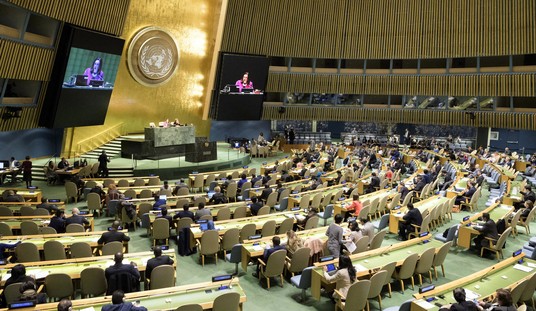Our copyright laws get beaten up on a regular basis around the world and occasionally here at home, leading to many, largely valid complaints from creators of intellectual capital. But not all copyrighted material is entirely sacrosanct, as demonstrated by places like Hot Air. There is an assumption in the publishing world that other people can adapt and repurpose your original work under certain circumstances. Every day, blogs like this excerpt short portions of published material for the purpose of expanding on it, commenting and/or criticizing. The question for many content creators is where to draw the line.
One case working its way through the courts right now may providing more clarity on this. The incident in question didn’t involve published writing, however. It was a piece of music which showed up in a YouTube video of dancing babies. The adorable video had a radio playing a Prince song in the background while babies danced, and because the tune showed up on the web the owners of the music wanted to shut it down. According to the US Court of Appeals, they couldn’t do it because this qualified as fair use. (Electronic Frontier Foundation)
The Electronic Frontier Foundation (EFF) represents Stephanie Lenz, who—back in 2007—posted a 29-second video to YouTube of her children dancing in her kitchen. The Prince song “Let’s Go Crazy” was playing on a stereo in the background of the short clip. Universal Music Group sent YouTube a notice under the Digital Millennium Copyright Act (DMCA), claiming that the family video infringed the copyright in Prince’s song. EFF sued Universal on Lenz’s behalf, arguing that Universal abused the DMCA by improperly targeting a lawful fair use.
Today, the United States Court of Appeals for the Ninth Circuit ruled that copyright holders like Universal must consider fair use before trying to remove content from the Internet. It also rejected Universal’s claim that a victim of takedown abuse cannot vindicate her rights if she cannot show actual monetary loss.
Before proceeding, it might help to have a short review of precisely what we mean by fair use. (Stanford)
In its most general sense, a fair use is any copying of copyrighted material done for a limited and “transformative” purpose, such as to comment upon, criticize, or parody a copyrighted work. Such uses can be done without permission from the copyright owner. In other words, fair use is a defense against a claim of copyright infringement. If your use qualifies as a fair use, then it would not be considered an illegal infringement.
Particularly in the case of music this can be tricky. When it comes to a paragraph or two from a book or an essay, it’s fairly easy to show that you’re simply providing an example with a link to the full material at the owner’s site and then publishing your own thoughts on the same topic. Music, however, is a bit more tricky. I suppose I could publish an article with a brief audio file snippet from Prince’s song and then go on to say how horrendous his music is, but that’s not using the music to enhance our “product.” When a candidate uses somebody’s song at a campaign event without obtaining the rights that’s a different situation and you run into legal problems.
But what about the mom in this video? Her children wouldn’t have been dancing if the music hadn’t been playing, right? So it was really part of the “production” at its core, regardless of how spontaneous and amateurish the video may have been. But she wasn’t making any money off of it, so where was the loss to the owner? These questions become complicated, but in the end I think some of these marginal cases are going to have to revert back to Supreme Court justice Potter Stewart’s pornography rule. (“I know it when I see it.”) That’s pretty unsatisfying to lawyers and leaves room for highly questionable decisions, but what else is there to do? It’s an extremely subjective question.
In the case in question it seems obvious, at least on paper, that the mother who published the video was not commenting upon, criticizing, transforming or parodying the Prince song. The music showed up in her video and was, in fact, integral to giving it the value that people found in it. Under that strict interpretation she should have lost the case. But in the real world this was just some kids getting worked up, dancing and enjoying themselves and the world found it adorable. It could have been pretty much any dance tune in history and the result would have been the same. If she tried to sell the video and make a fast buck, there might have been reason to complain, but going after her on this score just looks petty.
I know it when I see it… and this wasn’t it.







Join the conversation as a VIP Member